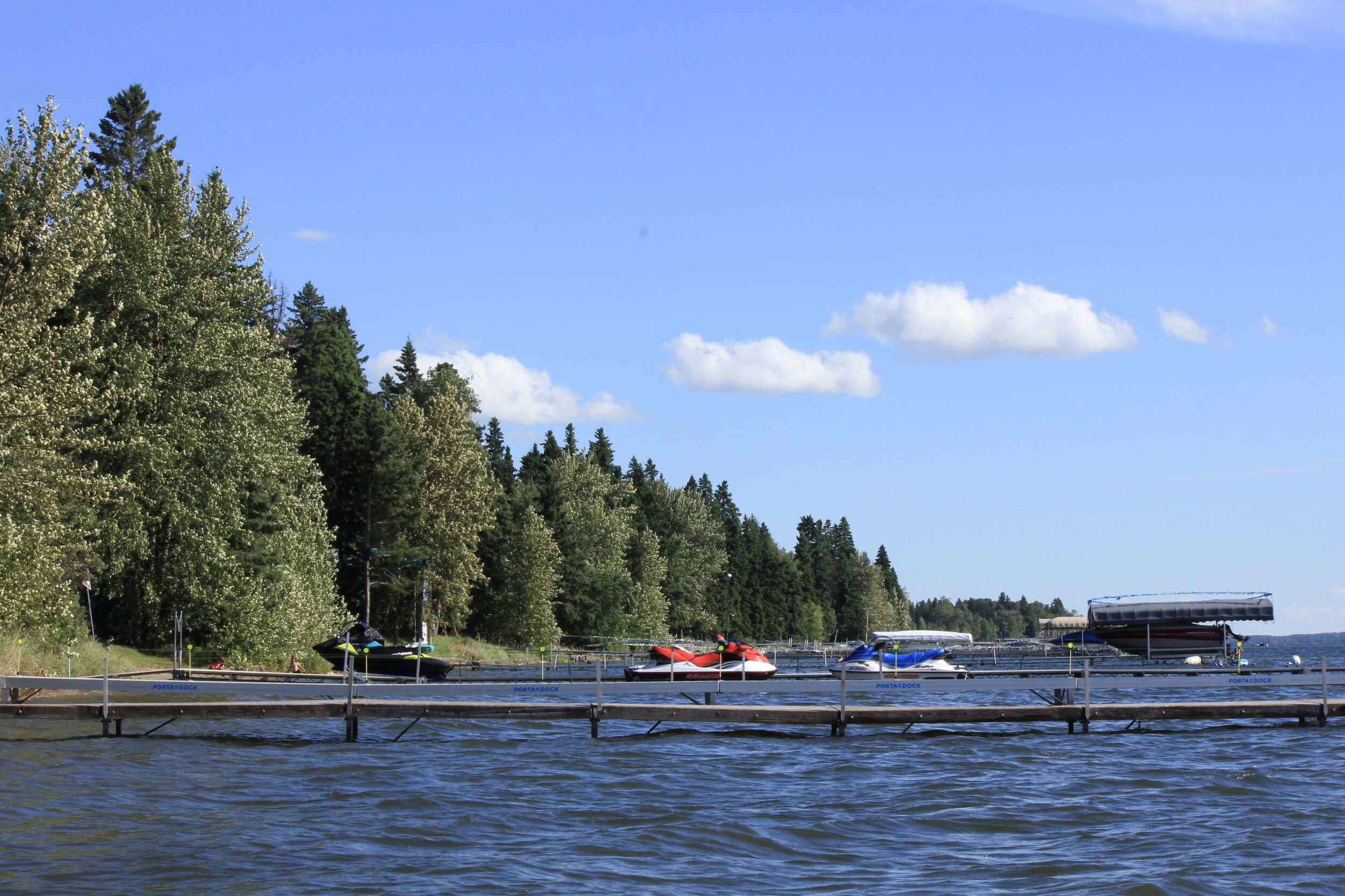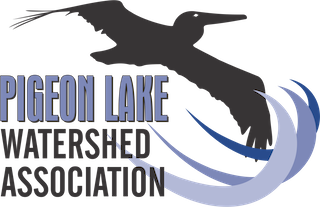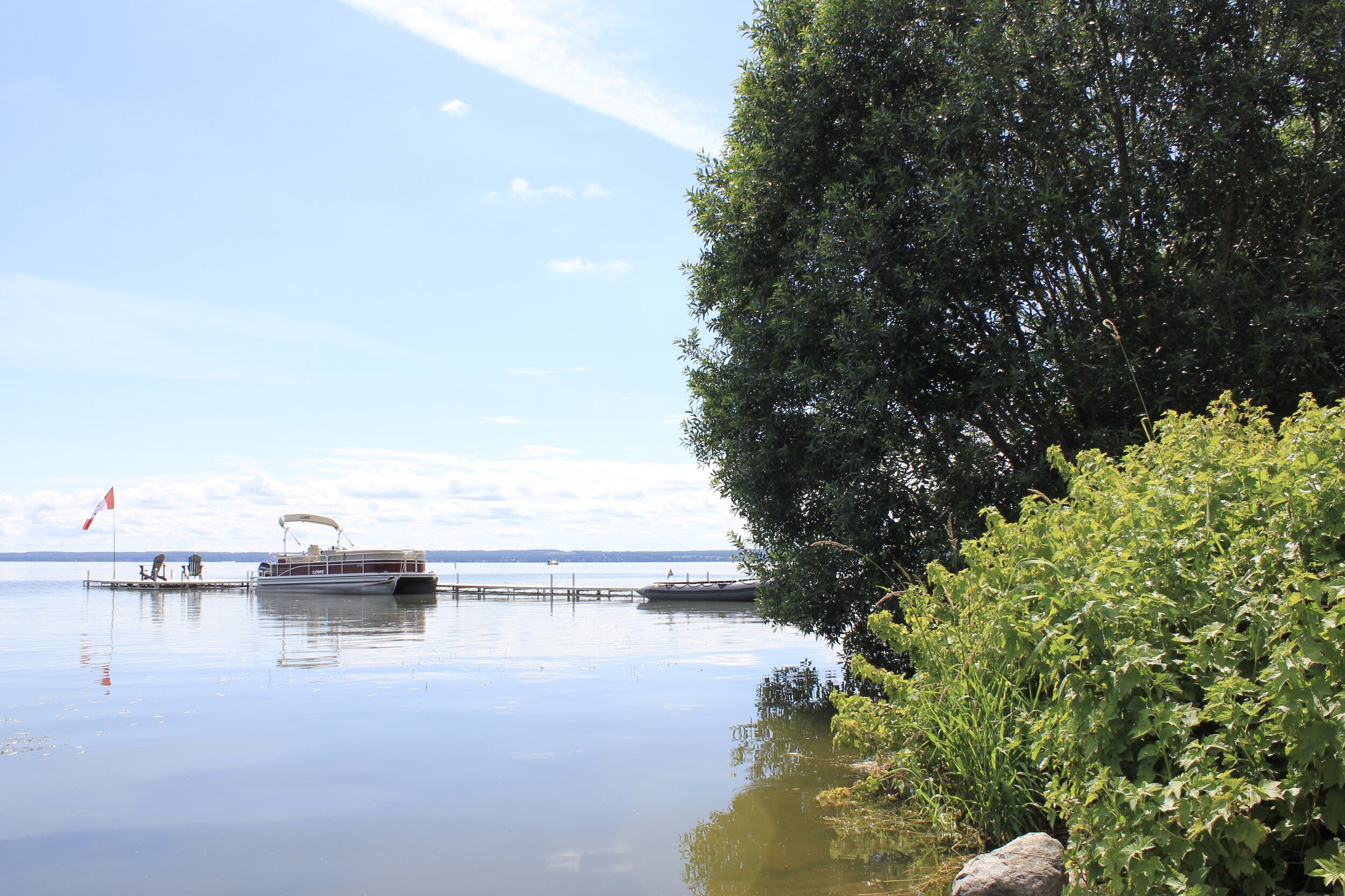
Shoreline Restoration
Naturalize Your Lot: A Guide to Lake-friendly Landscaping
Reminder: Permits are required when using construction equipment on or near the shoreline
Be Lake Informed
Assessing Your Lot
Obtaining Permits
Minimizing Your Footprint
Shoreline Restoration
Planting for the Lake
Preventing Noxious Weeds
Maintaining Lake Lawns
Residential Construction Information
Did You Know?
Two shoreline assessments were completed at Pigeon Lake In 2018.
Government of Alberta - Pigeon Lake Shoreline Assessment
This lake-wide study provides a lake riparian intactness rating which indicates that on the lake shoreline, vegetation is limited or mostly clear with a prevalent to dominant footprint.
Love Your Lake: Pigeon Lake Shoreline Assessment
According to the Love Your Lake assessment 33% of the 247 properties assessed were naturalized (regenerative or natural). Meaning there are many properties that will benefit from naturalization in order to help improve the water quality of Pigeon Lake.
Healthy shorelines are important to maintain water quality, prevent erosion, reduce the potential for flooding, and provide a habitat for wildlife. A naturalized shoreline, composed of native trees, shrubs, and natural rocks left unaltered, is a healthy shoreline.
Pigeon Lake Ice Damage - Winter 2020/21
Is a permit required to restore the shoreline?
When working on the shoreline, including restoration work, a provincial permit will be required if you are using construction equipment on or near the shore i.e. below the ordinary high water line. A development permit from the municipality may also be required.
It is important to carefully research the best practice for restoring damage from ice pushes to avoid any detrimental effects on the lake and fish habitat. It is not just as simple as pushing the dirt back into the lake!
Contact details regarding permitting available in the information sheet.
Tips for a Healthy Shoreline & Healthy Lake
✓ “Soft” Shoreline Armoring
A shoreline with natural vegetation, natural rocks, and wave-hardened sand is the best way to prevent erosion. Limit the size of the path to the water for people and vehicles.
✘ “Hard” Shoreline Armoring
Retaining walls (rock, wood, or concrete) can interfere with currents and contribute to erosion. Hardened shorelines eliminate the filtering qualities of a natural shoreline, impact fish habitat, impede wildlife access to and from the water, and scour sand from beaches.
✓ No-Mow Zones
A vegetative buffer strip above the high watermark on the shoreline is essential for erosion control and it will protect the lake. This applies to all sizes of shoreline lots. A simple start is to stop mowing your lawn close to the shoreline. (Start by leaving 3-6 feet from the shoreline, but the larger the area the better!) A “No-Mow” zone allows native plants to seed and reestablish.
✘ Lawn to the shoreline
If you have lawn close to the shoreline, consider replacing it with a natural buffer. The shallow roots of turf provides almost no infiltration or treatment of pollutants in stormwater. it is also poor at binding soil, and this can result in erosion and land slumping.
✓ Using the Power of Plants to Combat Erosion
High winds and strong storms are common at Pigeon Lake, resulting in big waves that can erode unprotected shorelines. Roots from vegetation help hold the soil together and stabilize the shoreline to prevent a loss of property. Frame your view with trees, and retain as many native plants as possible. This will also provide food and shade for fish. Benefits of vegetated riprap, Watersheds Canada
✘ Dumping Sand, Gravel or Fill on the Shoreline
Deposits of sand, gravel, and fill on a shoreline can introduce invasive species and can destroy spawning sites and habitat for fish. It’s prohibited by law (as defined in section 36.3 of the Fisheries Act)!
Shoreline & Riparian Areas
Riparian areas are transitional areas between upland and aquatic ecosystems of waterbodies and watercourses. It is an ecological zone between the land and water and varies in width and is not necessarily the same size around an entire waterbody. The shoreline is the convergence strip in the riparian area between the land and water. The Shoreline and riparian area provides tremendous importance not only to humans for recreational purposes, but also to wildlife and the overall health of a lake. The shoreline areas present a unique opportunity for people to help protect the environment and reduce their footprint.
Legal Bank
The Bed and shore of a body of water ends at the legal bank, also known as the ordinary high-water mark as defined in Section 17 of the Surveys Act. The legal bank is a natural boundary formed by the presence of water that typically results in vegetation distinct from the upland vegetation. The legal bank may fluctuate over time.
Reference: Water Boundaries, Alberta
In the Water
Docks
There are many different types of docks, chose a low impact style such as post-supported or cantilevered. These dock styles reduce the disturbance of the lake bottom and allow for the continued flow of water beneath them. Floating docks are also low impact, however Pigeon Lake is prone to large storms with high winds and big waves, so they are not recommended.
Aquatic Vegetation
Aquatic plants are not weeds. They have an important role in oxygenating and shading the water. Removing vegetation disturbs the sediment on the lake bed releasing phosphorus into the water which can lead to cyanobacteria growth. It also disturbs the habitat for fish and other aquatic species. Unauthorized aquatic vegetation removal is illegal unless it is an invasive species
ALMS Aquatic Plant Book | Respect our Lakes: Aquatic Vegetation and Lake Health, Alberta
Watershed Regulations & Permitting
Shoreline modifications are generally discouraged except those that naturalize the land to improve the health of the lake and control erosion. When considering any changes, It is important to know what part of your property is regulated by the local municipality and what is public land subject to provincial and federal regulations. Check out the section on Obtaining Permits.
Love Your Lake
According to the 2018 Love Your Lake: Pigeon Lake Shoreline Assessment, disturbed shorelines (including erosion) are typically observed with areas that have been cleared of all or most vegetation and left bare or where an ornamental yards have been established with lawn that extend to the water’s edge and hardened structures such as retaining walls have replaced vegetation.
Love the Lake Stewardship Message: It is recommended that shoreline property owners engage in naturalization projects to further decrease the ornamental percentage and increase the regenerative and natural percentages.
Pigeon Lake Shoreline Assessment. 2019. Love Your Lake, Watersheds Canada and the Canadian Wildlife Federation.
Johnsonia Property Demonstration
This demonstration site shows how a shoreline can be restored to a healthy and functional riparian area that also maintains recreational access and key features that ensure enjoyment by the homeowner. The pilot is also to learn which of three types of willows fair best in the sandy near lake soil.
PLWA Resources
PLWA Clean Runoff Property Assessment Tool
Additional Resources
Benefits of vegetated riprap, Watersheds Canada
Guidelines for lakeshore use, Government of Alberta
Living on the Waterfront: The Alberta Guide for Shoreline Living, Nature Alberta
Riparian Conservation: A Landowner Guide, Alberta Conservation Association










